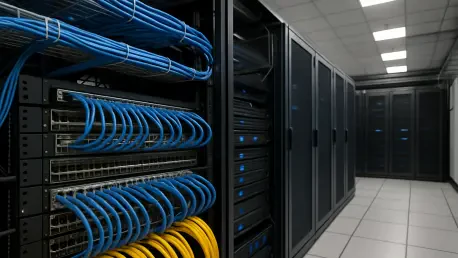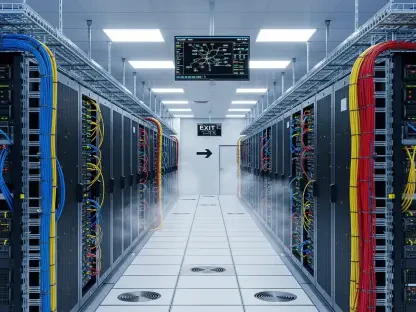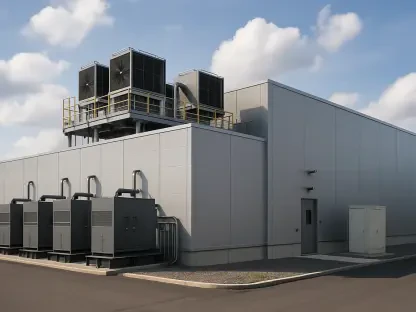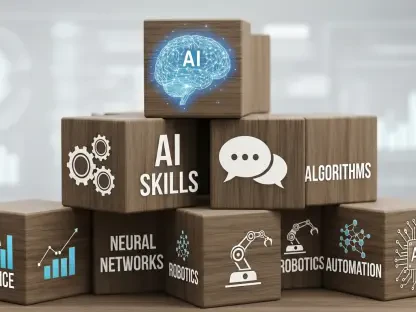In a remarkable thrust towards redefining the frontiers of artificial intelligence, Meta is embarking on an ambitious mission to extend its AI data center capabilities, significantly impacting the realm of superintelligence. With Mark Zuckerberg at the helm, the company has committed to a staggering investment calculated in “hundreds of billions of dollars.” This investment underscores Meta’s vision of evolving its computing infrastructure as a catalyst for superintelligence. Central to this enterprise is the establishment of extensive AI clusters known as Prometheus and Hyperion. These clusters not only symbolize the sheer magnitude of computational power Meta aims to harness but also represent a strategic leap in AI development that promises to redefine benchmarks within the industry. The implications of such advancements extend beyond technical prowess, suggesting transformative prospects for storage solutions integral to this artificial intelligence expansion.
Meta’s Futuristic AI Clusters
Meta’s Prometheus cluster, stationed in Ohio, exemplifies the scale of the company’s expansion strategy, boasting a colossal 500,000 GPUs. This endeavor is powered by over 1,020 megawatts of electricity, underlining the significant demand for power. Networks of ultra-high bandwidth interlink these GPUs, operating through Arista switches and Broadcom ASICs, ensuring seamless and uninterrupted connectivity. To sustain such a massive power consumption, the facility houses two on-site natural gas plants, each outfitted to generate an impressive 200 megawatts of power. Reflecting Meta’s approach to cohesive integration, these elements demonstrate a harmonious orchestration of cutting-edge technologies. In parallel, the upcoming Hyperion cluster project in Louisiana is poised to surpass even this colossal venture. Targeted to achieve over 1.5 gigawatts of IT power, its first phase is strategically scheduled for completion by 2027. With visionary scope, Hyperion is set to become the world’s largest individual data center campus, marking an unparalleled milestone by 2030.
This ambitious scale of Meta’s AI centers epitomizes not only a revolutionary phase for the company but also a substantial influence on the future landscape of computing. The meticulous alignment of powerful AI clusters like Prometheus and Hyperion illustrates the intensity of Meta’s aspirations. By driving both capacity and connectivity to unprecedented levels, Meta is positioning itself as a pivotal player in the superintelligence arena. The practical execution of these clusters, with a focus on expansive power generation and ultra-high bandwidth interconnections, underscores Meta’s commitment to spearheading AI advancements. With each milestone achieved, Meta not only pushes its internal boundaries but also sets an industry standard, inviting exploration into new horizons of what superintelligence can achieve.
Addressing Storage and Data Management
The expansion of these vast AI clusters brings with it substantial demand for innovative storage solutions, a recurring theme in Meta’s strategic projections. As Meta foresees a cumulative need for millions of GPUs, the magnitude of associated storage demands becomes apparent. Previous ventures, such as the AI Research SuperCluster initiated in January 2022, illustrate Meta’s adept handling of expansive storage requisites. By employing an aggregate of sophisticated storage technologies, including Pure FlashBlade, Penguin Computing cache storage, and Pure FlashArray, Meta efficiently managed over 185 petabytes of storage across 6,080 GPUs. These numbers only serve to highlight the projected storage scale required to accommodate future superclusters.
Strategic partnerships underscore Meta’s foresight in managing burgeoning storage demands. Collaborating with Pure Storage, Meta utilizes Direct Flash Module (DFM) drive technology, potentially incorporating their own NAND chips. Anticipated outcomes of this association suggest substantial production increases, with Meta planning to achieve considerable exabytes of storage by 2026. Such collaborations not only illustrate Meta’s robust strategic network but also their layered approach toward data management. By leveraging technologies like HDDs for substantial data storage and QLC and TLC SSDs for distinct capacity and performance tasks, Meta effectively demonstrates their methodological strategy for diverse data workloads.
Implications and Future Perspectives
Fundamental to these significant expansions is the reliance on high-bandwidth memory (HBM) chips, which form a key part of the GPUs within these clusters. Expected sourcing from major manufacturers demonstrates the broad scope and scale of Meta’s investments in infrastructure. Importantly, post-training data protocols necessitate economical archiving solutions for extensive volumes of cold data. Herein lies the practical aspect of tape storage, championed by Meta for its economic advantage over conventional disk or SSD options. Reported utilization of an extensive tape archive for cold data storage highlights Meta’s strategic orientation towards prudent data management.
The overarching narrative within industry circles is a consensus on the growing demand for vast storage solutions capable of accommodating AI advancement. Meta’s synergy with prominent tech contributors like Pure Storage signals a cohesive strategy in overcoming both storage and computational challenges. The projection encompasses not only current infrastructures but also potential collaborations with leading NAND and HBM producers, ensuring Meta’s continued trajectory in superintelligence. Exploring current partnerships and fostering new ones reinforce Meta’s comprehensive vision of reinventing AI-driven technology landscapes.
Looking Ahead in AI Evolution
Meta’s Prometheus cluster in Ohio highlights the company’s massive expansion, sporting 500,000 GPUs and consuming over 1,020 megawatts of electricity. Such high power demand is met by two on-site natural gas plants, each capable of generating 200 megawatts. Cutting-edge technologies, including networks of ultra-high bandwidth, Arista switches, and Broadcom ASICs, ensure connectivity within this setup. This reflects Meta’s strategy for cohesive integration of tech. Meanwhile, the upcoming Hyperion project in Louisiana aims to exceed Prometheus, targeting over 1.5 gigawatts of IT power by 2027, with plans to become the world’s largest data center campus by 2030. Meta’s AI centers symbolize a transformative era for the company, impacting computing’s future landscape. By ramping up capacity and connectivity, Meta positions itself as a key player in superintelligence. Achieving such ambitious goals, Meta pushes its boundaries and sets industry standards, prompting exploration into superintelligence’s potential.









